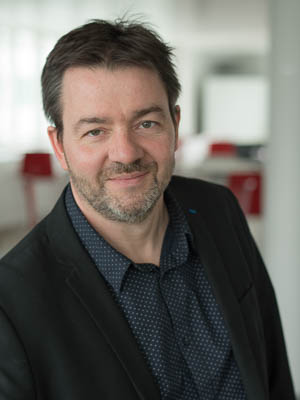
Adresse physique :
Centre Inria de Paris
48 rue Barrault
75013 Paris
Adresse postale :
Centre Inria de Paris
48, rue Barrault
CS 61534
75647 PARIS CEDEX
Contact
- Tél. : (+33) 01 80 49 40 00
32 équipes-projets et 700 personnes, chercheurs, ingénieurs et personnels d’appui à la recherche, issues de 55 nationalités différentes œuvrent chaque jour pour : explorer de nouveaux champs de recherche fondés sur l’informatique et les mathématiques appliquées ; développer des technologies logicielles d’envergure ; accompagner et accélérer des projets de création de startups deeptech.
À partir de l’informatique et des mathématiques appliquées, les projets de recherche et d’innovation des équipes du centre Inria de Paris touchent toutes les dimensions des sciences et technologies du numérique :
Le paysage parisien de la recherche en mathématiques et informatique a de nombreux atouts qui témoignent du fort dynamisme professionnel de la ville. Paris est une escale incontournable facilitant les échanges internationaux et l'organisation de nombreuses manifestations scientifiques.
Certaines de nos équipes de recherche travaillent au centre Inria de Paris et d'autres sont hébergées dans les laboratoires les plus prestigieux de la capitale en lien avec trois grandes universités de recherche et d’innovation de rang mondial : Paris Sciences et Lettres, Sorbonne Université, Université Paris Cité, ou des partenaires comme l’Institut Pasteur et l’ENPC. Inria est également partenaire de l'Alliance Sorbonne Université.
Grâce à ces partenariats, les chercheuses et chercheurs du centre Inria de Paris réalisent de nombreuses collaborations intra- et inter-disciplinaires avec différents acteurs de la recherche :
Vous souhaitez travailler sur des projets stimulants dans un cadre international, innovant et interdisciplinaire ? Tous les ans, Inria recrute des stagiaires, doctorantes et doctorants, post-doctorantes et post-doctorants, chargées et chargés de recherche et des directeurs ou directrices de recherche, par voie de concours ou sur contrat.
Afin que les jeunes chercheurs ou chercheuses exercent leurs travaux dans des conditions optimales dès leur arrivée,
un « Welcome package » est proposé à toute et tout chargé de recherches (CRCN) et Inria starting faculty position (ISFP) nouvellement recruté au centre Inria de Paris. Il comprend une bourse de thèse ainsi qu’un budget de fonctionnement
de 15000 €.
Plus d'informations sur :
Inria propose un environnement unique à de nombreux talents dans le domaine du développement technologique et logiciel. Le métier d’ingénieur(e) de recherche consiste à accompagner et garantir la qualité de la production de savoirs et de valeur des équipes de recherche.
Inria fait appel à des talents dans plus d’une quarantaine de métiers d'appui à la recherche allant, entre autres, des ressources humaines à l’assistanat administratif et la gestion financière en passant par la communication… Les 900 femmes et hommes des services d'appui qui accompagnent les activités de recherche et d'innovation sont une fierté de l'institut et constituent la colonne vertébrale d'Inria.

Adresse physique :
Centre Inria de Paris
48 rue Barrault
75013 Paris
Adresse postale :
Centre Inria de Paris
48, rue Barrault
CS 61534
75647 PARIS CEDEX
Contact